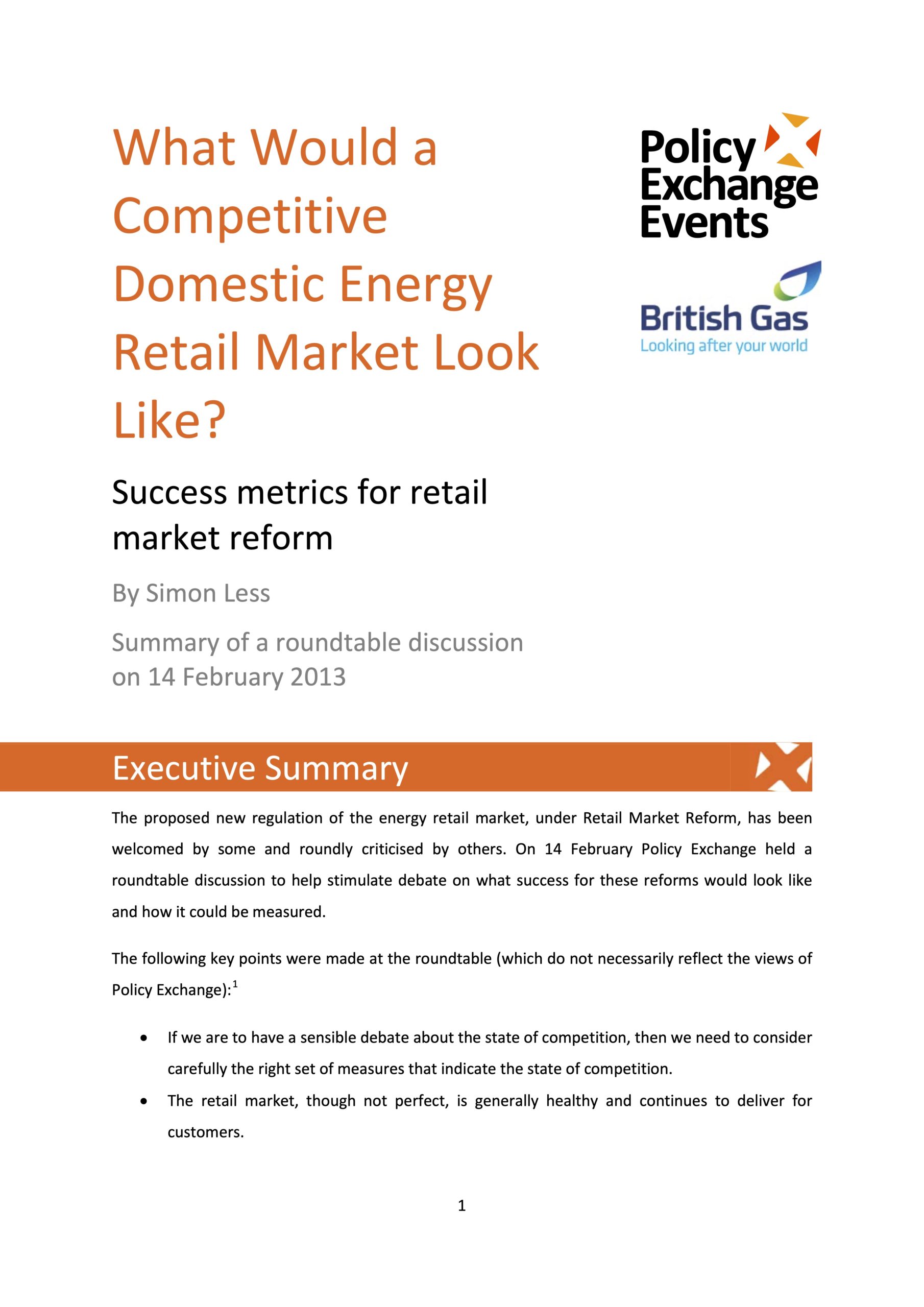
What Would a Competitive Domestic Energy Retail Market Look Like? Success metrics for retail market reform
The proposed new regulation of the energy retail market, under Retail Market Reform, has been welcomed by some and roundly criticised by others. On 14 February Policy Exchange held a roundtable discussion to help stimulate debate on what success for these reforms would look like and how it could be measured.
The following key points were made at the roundtable (which do not necessarily reflect the views of Policy Exchange):
- If we are to have a sensible debate about the state of competition, then we need to consider carefully the right set of measures that indicate the state of competition.
- The retail market, though not perfect, is generally healthy and continues to deliver for customers.
- The majority of customers were unlikely to benefit from Ofgem’s Retail Market Reform proposals, and in particular vulnerable customers.
- Competitive markets are generally good at delivering efficiency, innovation and low average prices across all customer groups, but they are not good at making sure particular groups get particular outcomes. If helping vulnerable customers is the most important goal, focusing on the overall degree of competition is not in principle the best way to deliver this.
- The key may be to target help for vulnerable customers to access better terms that are already available in the market. Collective switching could provide a key approach, particularly if combined with an approach that encouraged local authorities, housing associations and others to help vulnerable customers switch, access lower tariffs and energy efficiency measures.
- We also need to be concerned about the barriers to the growth of new entrants. A key problem is the burden of regulation that kicks in once a small supplier reaches 250,000 customers, and the distortion to competition this creates.
We need to be able to distinguish in future whether the government reforms have been successful, have been insufficient or have made matters worse. Unless we are able to evaluate the reforms properly, there is a risk that yet further regulatory interventions will be demanded without understanding either the impacts of existing or proposed new regulation. This risks ongoing regulatory uncertainty and increasing unintended consequences from regulation.

